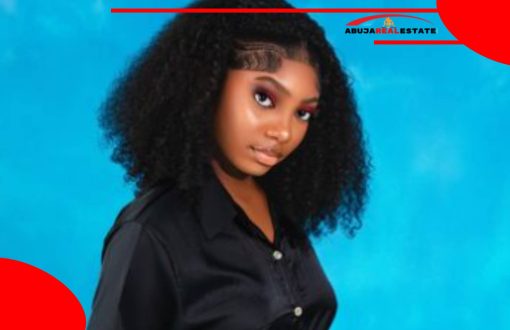TikTok Face Effects Filter Trend – Here’s What You Need to Know

Hey TikTok fam! I’m your guide today—part trend researcher, part TikTok creator—and I’m here to break down one of the most exciting and evolving phenomena on the app: TikTok face effects and filter trends. Whether you’re a casual scroller, an influencer, or just curious how everyone is suddenly a Pixar character or aging backward, you’re in the right place.
Let’s dive into everything you need to know about the face effects filter trend from A-Z.
What Are TikTok Face Effects Filters?
TikTok face effects are augmented reality (AR)-powered visual overlays that modify or enhance the user’s appearance in videos. These filters range from subtle beauty enhancements to wildly creative transformations—like turning into an anime character or applying hyper-realistic aging effects.
Read Also: TikTok’s Viral Eye of Ra Meme Explained
Unlike traditional filters (which usually alter color tones or brightness), face effects specifically track facial features, adapting in real-time to your movements. They can change your jawline, apply makeup, animate your expressions, or even add full 3D graphics to your face.
Why Face Filters Became a Viral Trend on TikTok

Face filters have gone viral for two big reasons: entertainment value and algorithmic boost.
TikTok’s algorithm favors content that is novel, engaging, and shareable. When creators use trending filters—like the Aging Filter, Bold Glamour, or Face Swap—their videos often gain traction faster. Combine that with the visual “wow” factor, and you’ve got a trend ready to explode.
Also, filters make video creation easier for camera-shy users. You don’t need perfect lighting or makeup when a face filter can smooth your skin, contour your face, and do the work for you.
Popular TikTok Face Filters in 2025
Here’s a roundup of some viral TikTok face filters making waves in 2025:
1. Bold Glamour Filter
This AI-powered filter redefined beauty filters by applying makeup and facial structure changes so seamlessly that it’s hard to detect. It sparked debate and fascination over its realistic, almost surgical effects.
2. AI Baby Filter
This face filter transforms adult users into adorable babies, complete with chubby cheeks and baby voices. It’s been widely used in storytelling and “then vs now” videos.
3. Teenage You
This reverse-aging filter takes you back to your high school self. Gen Z and Millennials alike have been posting side-by-side comparisons.
4. Cartoon/Anime Face
Transform your face into a Disney-like or anime version. It maps your facial features and animates your eyes, hair, and expressions in cartoon style.
5. Face Swap
This filter lets you swap faces with a friend or celebrity, often with hilarious and viral results.
How TikTok Filters Are Made
TikTok filters are powered by AR technology and AI face recognition, primarily using the platform’s Effect House, TikTok’s own effect-creation tool.
Here’s a basic breakdown of the creation process:
- Face Mapping: The AR software identifies facial landmarks (eyes, nose, mouth, etc.)
- Overlay Application: Designers upload 2D or 3D elements to map onto those facial points.
- Interaction Programming: Filters can include programmed animations triggered by facial expressions (like a raised eyebrow causing sunglasses to appear).
- Publishing on Effect House: Once submitted and approved, the filter becomes available to all TikTok users.
This democratization of filter creation has allowed creators to contribute to trends—not just follow them.
The Psychology Behind TikTok’s Face Filter Obsession
The viral nature of these filters isn’t just technical—it’s psychological.
Face filters provide:
- Instant Gratification: One tap and you’ve “glowed up”
- Dopamine Rush: Likes and comments skyrocket on filtered content
- Altered Self-Image: Filters often reflect idealized versions of ourselves, blurring the line between reality and fantasy
But it’s not all fun and games. Experts have raised concerns about body dysmorphia, filter fatigue, and confidence issues, especially among teens. Some filters even trigger subconscious comparisons with unrealistic beauty standards.
Still, when used mindfully, they can be a creative tool rather than a psychological trap.
How to Find and Use Face Effects on TikTok
If you’re wondering how to get in on the trend, here’s how to access and use TikTok face effects:
Step-by-step:
- Open the TikTok camera
- Tap on “Effects” at the bottom left
- Use the search bar or scroll through categories like Trending, Beauty, Funny, or New
- Tap to preview a filter
- Hit the record button and start filming
You can also save your favorite effects by tapping the bookmark icon so you can reuse them later. TikTok even shows you which filters are trending right now—so keep an eye on those for maximum reach.
The Role of AI in TikTok Face Filters
In 2025, AI has become the backbone of TikTok filters. Gone are the days of static overlays; today’s filters learn and adapt using artificial intelligence.
Here’s how AI improves face filters:
- Facial Expression Recognition – AI detects micro-expressions for more lifelike responses
- Skin Texture Mapping – Enables beauty filters to retain realistic skin details
- Lighting Adjustment – AI adjusts shadows and highlights for dynamic realism
- Predictive Movements – Some filters anticipate head tilts and eye blinks
This is why filters like “Bold Glamour” feel so seamless—they’re AI-enhanced rather than just AR-layered.
TikTok Filter Challenges Driving Engagement
Face effects aren’t just tools—they’re fuel for trends and challenges. Some viral challenges that sparked with face filters include:
- “Old vs. Young Me” Challenge (Teenage You Filter)
- “Bold Glamour Reveal” Challenge – Removing the filter mid-video to reveal the real face
- “AI Baby Reaction” – Parents using the baby filter on themselves and filming their child’s reaction
- “Cartoon Yourself” Transformation Edits
These trends invite participation and storytelling, encouraging users to interact creatively, thus increasing TikTok’s engagement metrics.
Are Face Filters Ruining Authenticity?
This is one of the most debated topics among content creators and viewers. While filters can boost confidence and creativity, critics argue they:
- Promote unattainable beauty standards
- Discourage authenticity
- Harm mental health in the long term
However, the counterargument is equally valid: Filters are a form of self-expression, just like makeup, fashion, or lighting. The key is transparency—many creators now label when they’re using a filter or do side-by-side comparisons to promote authenticity.
How Brands and Influencers Are Using Face Effects
Face effects are no longer just for fun—they’re now serious marketing tools. Brands collaborate with filter creators to launch custom AR filters for:
- Product launches
- Branded challenges
- Influencer marketing campaigns
For example:
- A makeup brand might launch a filter that applies their latest lipstick virtually
- A movie might create a character transformation filter to promote its release
Influencers who jump on these branded filters early often gain traction, followers, and even paid sponsorships.
How to Make Your Own Viral Face Filter
Ready to go from user to creator? Here’s a roadmap to making your own viral face filter:
- Download Effect House (PC/Mac)
- Learn the basics of AR layering
- Use templates and community forums to speed up learning
- Design with simplicity and shareability in mind
- Submit for approval and promote your filter using TikTok trends or challenges
Pro Tip: Filters that evoke emotion (funny, nostalgic, dramatic) tend to go viral faster than purely aesthetic ones.
Future of TikTok Face Filters
We’re entering the next generation of immersive AR. Here’s what the future holds:
- Full-body tracking filters (not just face)
- Real-time environment interaction (filters responding to surroundings)
- Voice-activated filters
- 3D avatars and AI-generated personalities
- Cross-platform use, from TikTok to Instagram and even VR worlds
Soon, filters may become more than just add-ons—they’ll be interactive digital characters, storytelling tools, or even virtual influencers.
Final Thoughts
So, there you have it—your full breakdown of the TikTok Face Effects Filter Trend. From viral challenges to AI-powered beauty enhancements, these digital tools are reshaping how we express ourselves online. Whether you’re here to have fun, grow your audience, or explore your digital identity, face filters offer endless creative potential.


